Abstract
In recent years, Japanese potato farming has seen consistent growth. Historically, the maximum national harvest reached 2.25Mt in 2022, with Hokkaido leading in shipping volume at 1.62Mt. The cultivated area peaked at 69.1kha, indicating steady expansion. This suggests a focus on increasing productivity and efficiency in key regions, especially Hokkaido, which plays a crucial role in the national supply. The trends reflect a strong, resilient sector adapting to market demands and optimizing yield.
Spring-planted potato yield (main data).
Japanese spring potato yields have decreased significantly from their 1986 peak of 3.98Mt to 56.4% of that level in recent years. This decline reflects a shift in agricultural practices or possible challenges in production. Despite this reduction, the sector remains vital, with ongoing efforts to adapt and improve efficiency. The past peak highlights the potential for higher productivity, and current trends suggest a focus on revitalizing yields and optimizing cultivation methods to regain former levels.
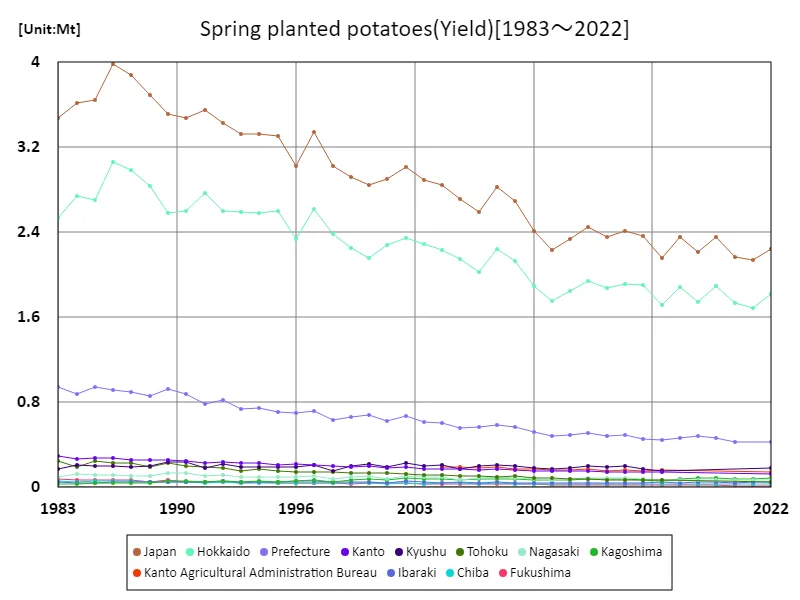

The maximum is 3.98Mt[1986] of Japan, and the current value is about 56.4%
Spring-planted potato harvest volume (by prefecture).
In Japanese agriculture, Hokkaido leads with the highest root vegetable yield, reaching 1.82Mt in 2022. This dominant position underscores Hokkaido’s critical role in national production. Over time, the trend shows regional disparities, with Hokkaido consistently outperforming other prefectures. The emphasis on optimizing yield in this key region reflects its significant contribution to the root vegetable sector, highlighting its efficiency and productivity. Current data suggests continued focus on enhancing Hokkaido’s role while addressing regional imbalances.
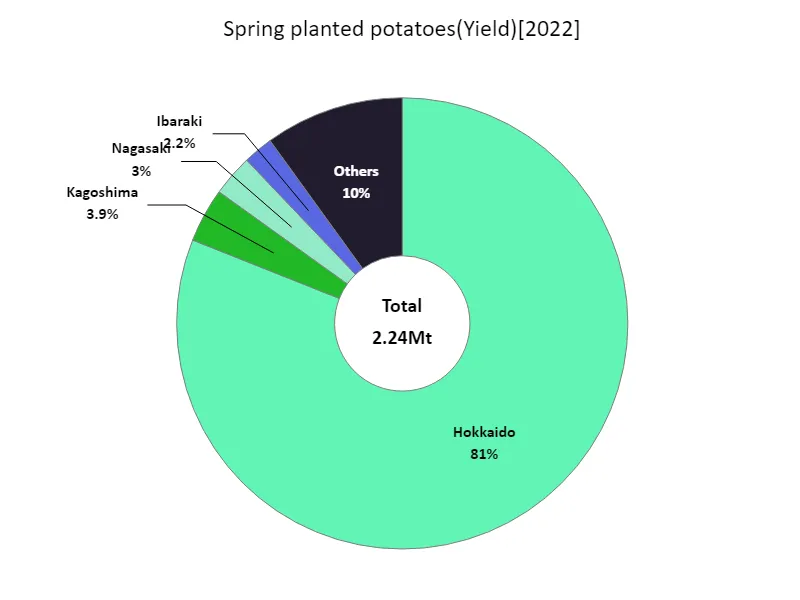

The maximum is 1.82Mt of Hokkaido, the average is 48.8kt, and the total is 2.24Mt
Area of cultivated potatoes planted in spring (main data).
Japanese spring-planted potato cultivation has seen a notable decline, with the maximum planting area of 125kha in 1984 now reduced to 55.1% of that peak. This trend indicates a significant contraction in acreage over the decades. Factors such as shifts in agricultural priorities, land use changes, or market conditions may have contributed to this reduction. Despite the decrease, the historical peak highlights the potential for growth, suggesting that revitalizing interest and adjusting practices could help restore or even exceed past planting levels.
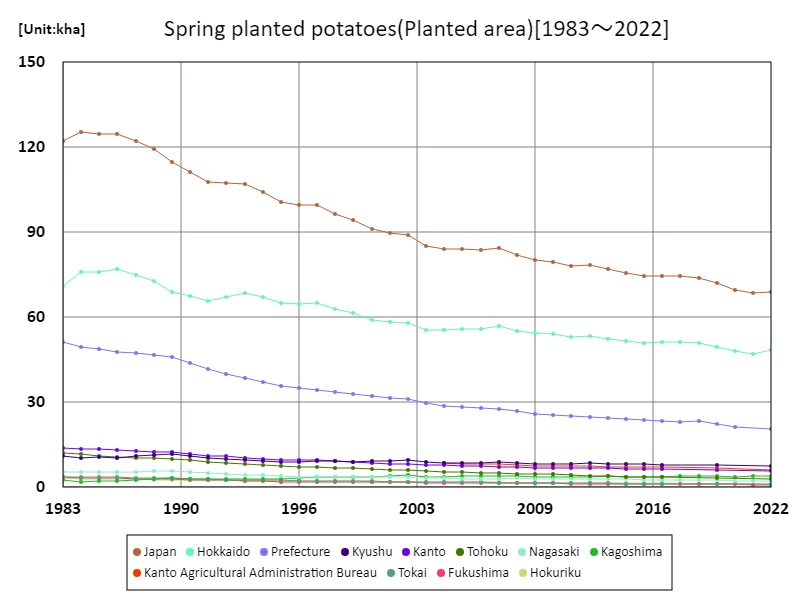

The maximum is 125kha[1984] of Japan, and the current value is about 55.1%
Area planted with spring-planted potatoes (by prefecture).
In 2022, Hokkaido had the largest area planted to root vegetables in Japan, at 48.5kha. One of the characteristics of Hokkaido so far is that it is a major production area for root vegetables, with its vast land area and suitable climatic conditions making it suitable for cultivating root vegetables. Agriculture in Hokkaido is supported by the proactive introduction of new technology and advanced management, which means that the area produced for root vegetables tends to be larger than in other regions. In addition, in areas outside of Hokkaido, cultivated varieties and cultivation techniques vary according to regional characteristics and demand. For example, in the Kanto region, high added value varieties are cultivated in response to market demand. Changes in agricultural policies, changing market needs, and climate change are all affecting the area under cultivation. In the future, it is expected that the promotion of sustainable agriculture and technological innovation will play an important role in stabilizing and increasing the cultivated area of root vegetables.
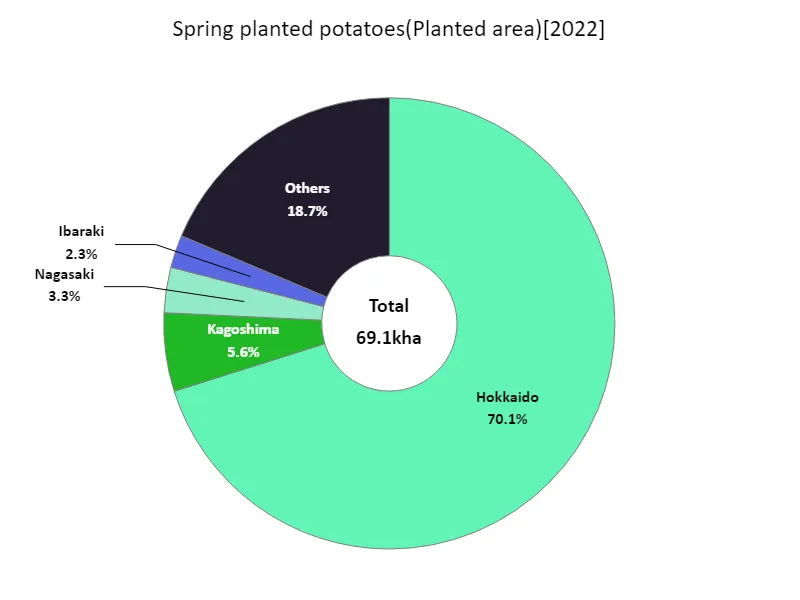

The maximum is 48.5kha of Hokkaido, the average is 1.5kha, and the total is 69.1kha
Shipping volume of spring-planted potatoes.
In 2022, Hokkaido led Japan in spring-planted potato shipping with 1.62Mt, highlighting its key role in the national supply. The average shipping volume across Japan was 41.4kt, with a total of 1.9Mt shipped nationwide. This concentration in Hokkaido illustrates its dominance in production and distribution. The data suggests a reliance on this region for high-volume supply, while other areas contribute less significantly. Trends indicate that optimizing Hokkaido’s production efficiency remains crucial, while exploring ways to enhance shipping from other regions could balance the overall distribution.
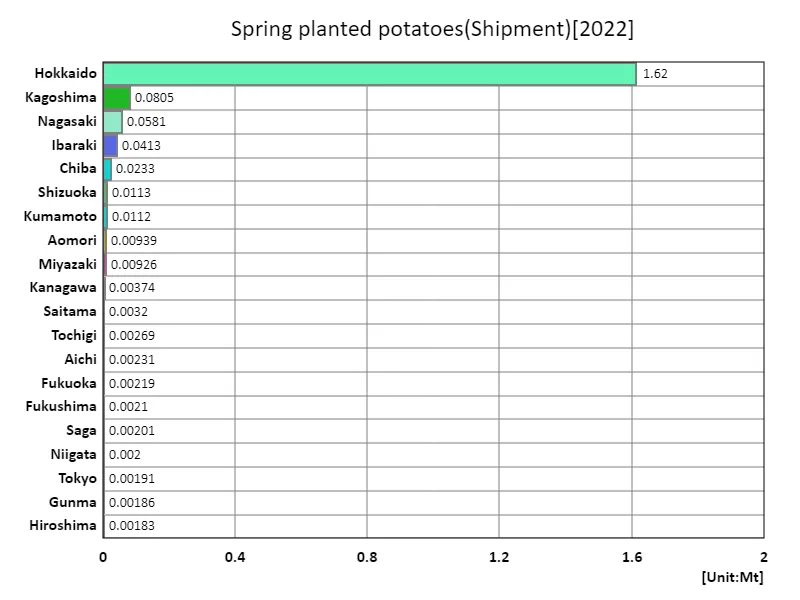

The maximum is 1.62Mt of Hokkaido, the average is 41.4kt, and the total is 1.9Mt
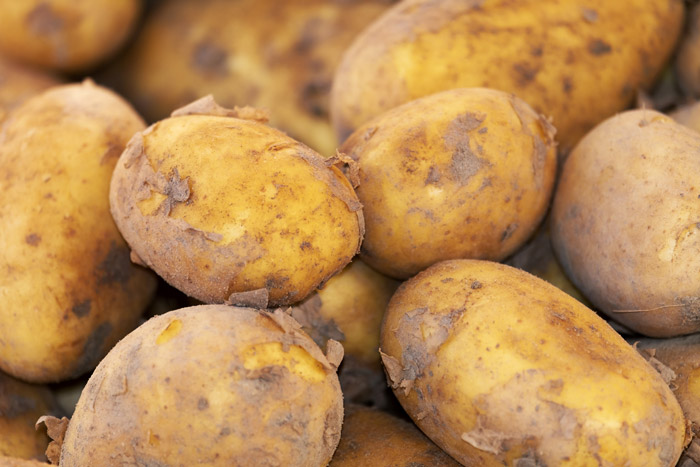


Comments